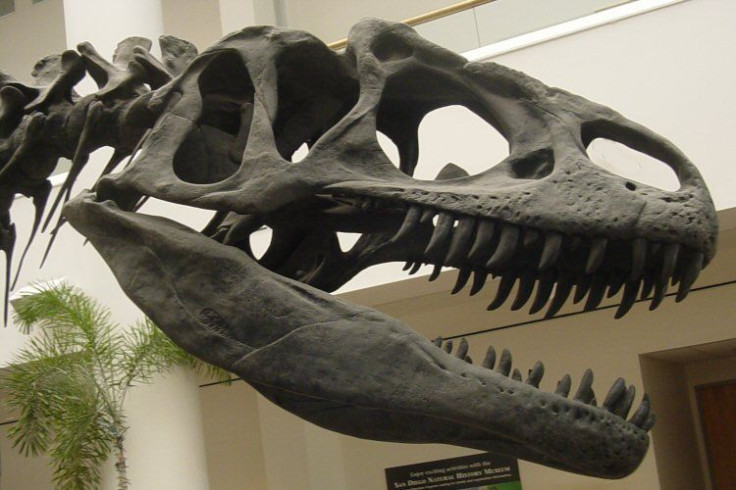Allosaurus Scavenged, Cannibalized To Survive, Finds Study
KEY POINTS
- Researchers found evidence that the Allosaurus engaged in cannibalism
- The creatures appear to have scavenged the remains of their brethren due to food scarcity
- Cannibalism is quite common in the animal kingdom
- Even non-predatory animals such as ants and hamsters tend to engage in cannibalism
The results of a new study showed the Allosaurus may have eaten members of its own species in "stressed" environments. Although cannibalism is a taboo among humans, it is actually quite common in the animal kingdom.
In studying the marks on the fossilized bones of dinosaurs from the Jurassic period, the researchers of a new study, published in the journal PLOS ONE, found that a significant portion of the bite marks were mostly made by therapods, likely the Allosaurus, which is the most common theropod at the Mygatt-Moore Quarry of Colorado, where the specimens the researchers studied are from.

While most of the bites were on the bones of herbivorous dinosaurs, other theropod bones also had evidence of theropod bites. In fact, 17% of the marks were theropod bites on other theropods. Since the carnivorous dinosaur bones from the quarry are mostly of the Allosaurus, this suggests that at least some of the bite marks were from the Allosaurus biting their own brethren in an act of cannibalism.
What's even more interesting is that many of the bite marks were in less nutritious places such as the toes, which could mean the bites were a result of picking over long-dead remains instead of actual hunting. This is because the dinosaurs would likely not go for less nutritious parts such as the toes if the more nutritious bellies were still there.
Simply put, the researchers found rare fossil evidence of cannibalism among dinosaurs, not as a result of hunting but of need in a stressed, food-scarce environment.
"Big theropods like Allosaurus probably weren't particularly picky eaters, especially if their environments were already strapped for resources," study first author Dr. Stephanie Drumheller said. "Scavenging and even cannibalism were definitely on the table."
Cannibalism among dinosaurs is actually not that surprising especially since modern-day predators such as crocodiles and Komodo dragons do engage in it under certain circumstances.
In February, a scientist also noted that cannibalism seems to be increasing among polar bears in the Arctic due to the lack of food, ice melt and human activities. Male lions taking over a pride are also known to eat the defeated pride's existing young so the females can get impregnated quicker.
However, it's not just the large predators that engage in cannibalism. For instance, according to Britannica, certain ant species regularly eat injured immatures. But when the food is still lacking, they can also eat healthy immatures. Even aquarium guppies tend to eat their own young in order to regulate their population size, while several hamster species have also been known to eat their own kind.
Young animals can also engage in cannibalism. For instance, spadefoot toad tadpoles tend to eat others in the pond so as to mature faster and get out of an already drying pond where they can end up dying.
Whether the reasons behind the behavior is due to food scarcity, survival, population control, or simply, for sustenance, cannibalism is a behavior that is actually quite common in the animal kingdom.
© Copyright IBTimes 2024. All rights reserved.












